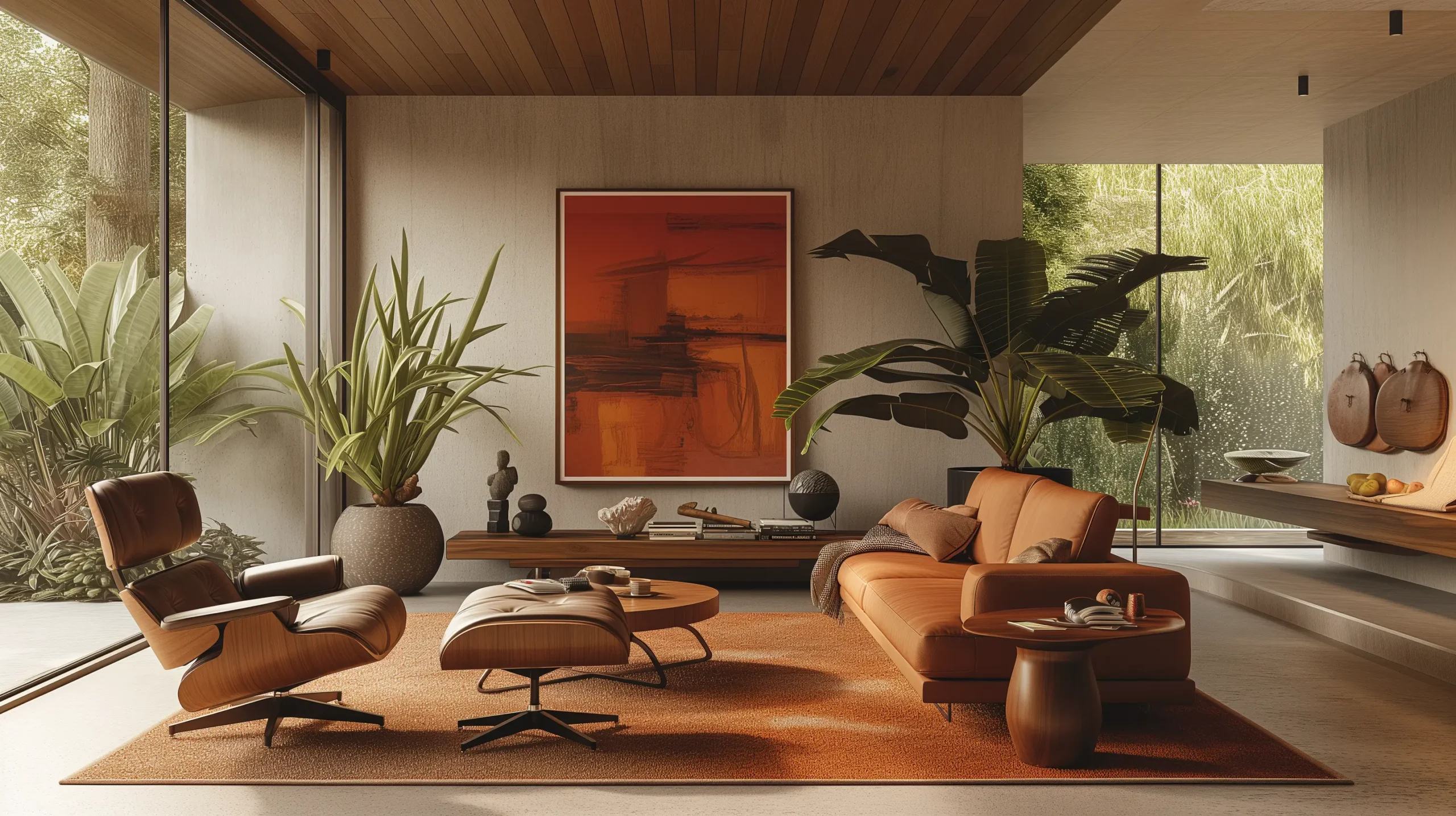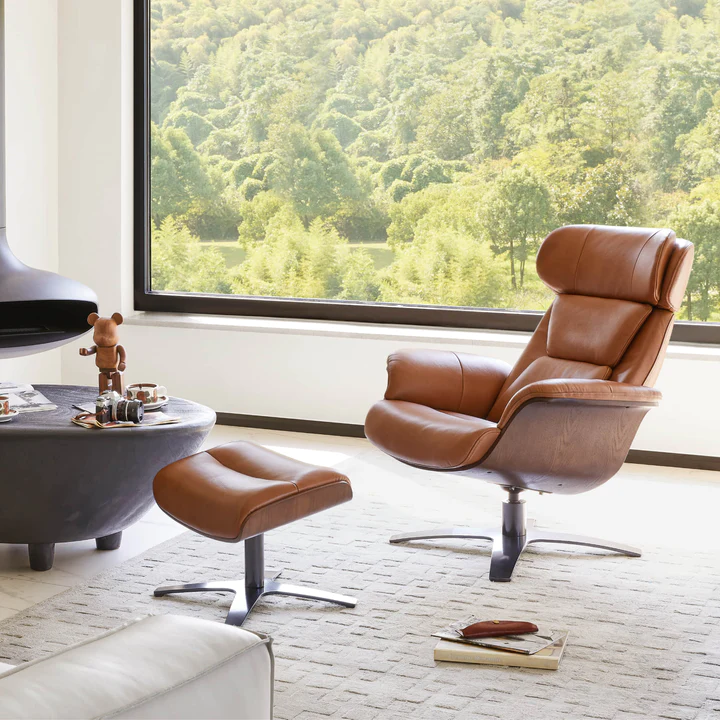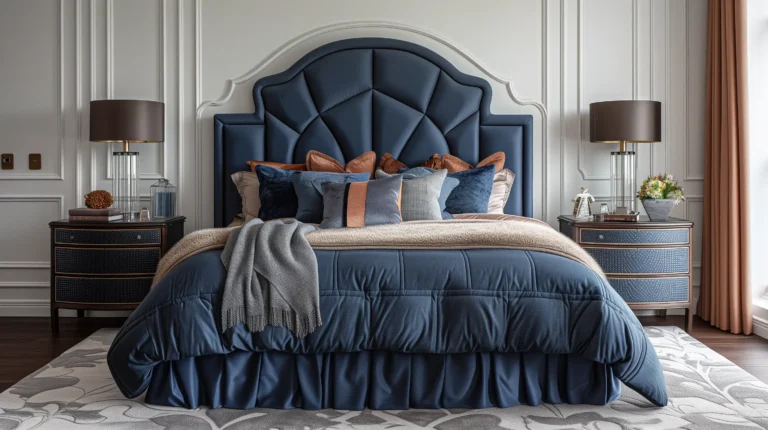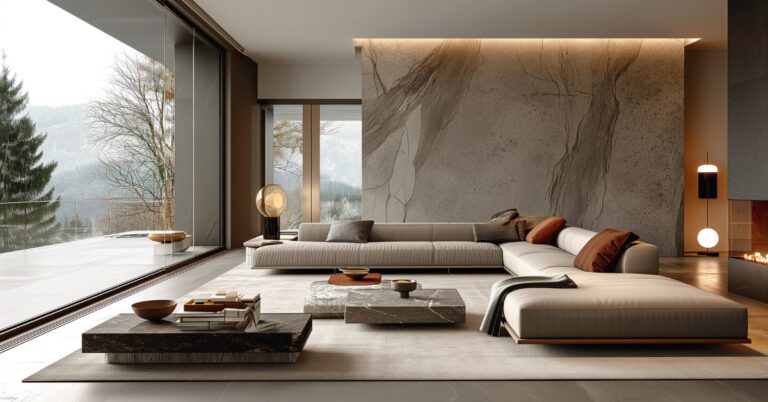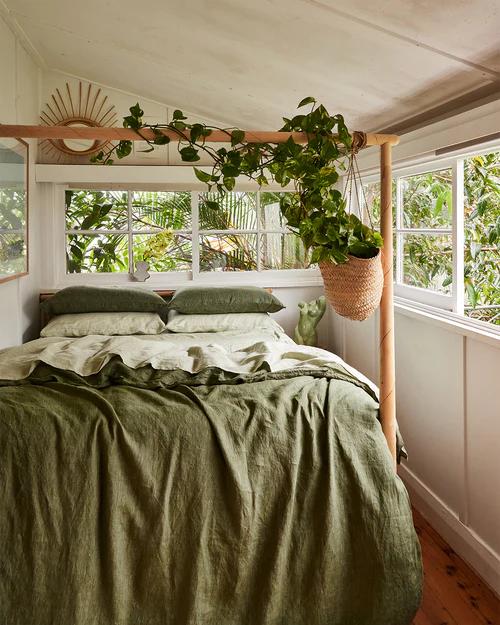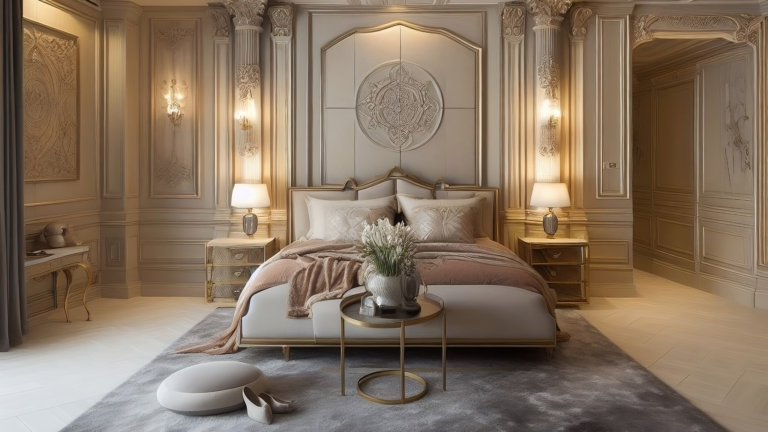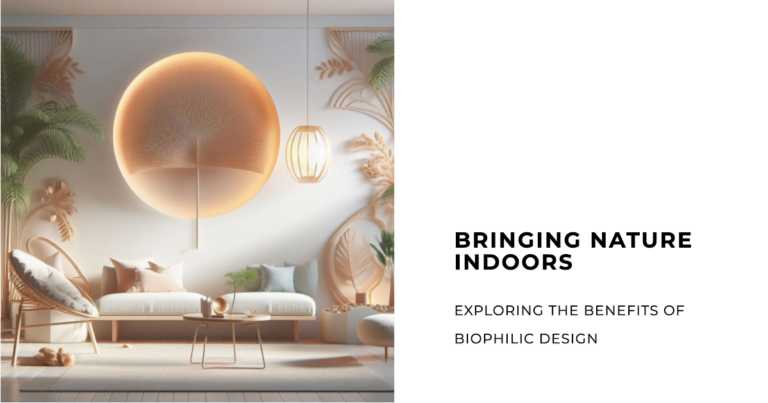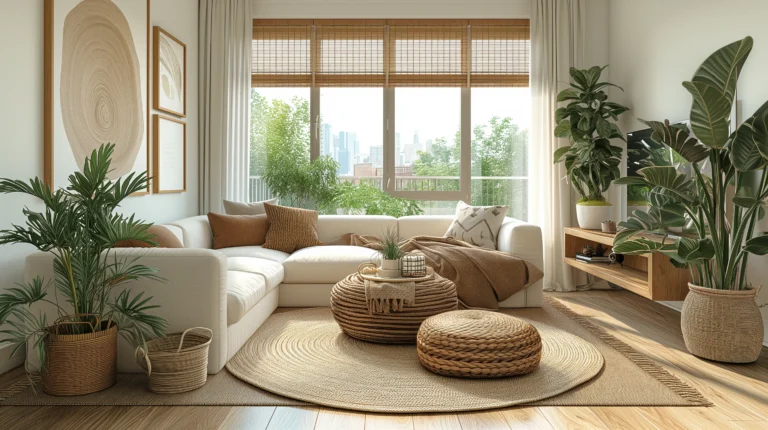What Is Midcentury Modern Style?
Definition of Mid Century Modern
Midcentury Modern is a design movement known for its clean lines, organic forms, and seamless integration of function and style. It flourished from the mid-1940s to the late 1960s, emphasizing simplicity and connection with nature. This style extends beyond interior design, influencing architecture, furniture, and even graphic design, embodying a chic, yet functional aesthetic.
Brief History of the Design Movement
The roots of Midcentury Modern stem from the early 20th century, evolving through the influences of Bauhaus and International styles. After World War II, a surge in demand for new housing and furnishings in the United States propelled this style into the mainstream. Designers like Charles and Ray Eames and Eero Saarinen contributed to its popularity by crafting iconic pieces that epitomized the era’s ethos of accessibility and innovation.
Popularity of Mid Century Modern Today
Today, Midcentury Modern enjoys a resurgence, celebrated for its timeless appeal and adaptability to contemporary living. Its bold colors and patterns, combined with a minimalistic approach, resonate with modern homeowners seeking a blend of nostalgia and modernity. This style’s influence is evident in modern living rooms, furniture pieces, and architectural digest features, proving that Midcentury Modern design will always be in style.
Examples of Mid-century Modern Interior Design
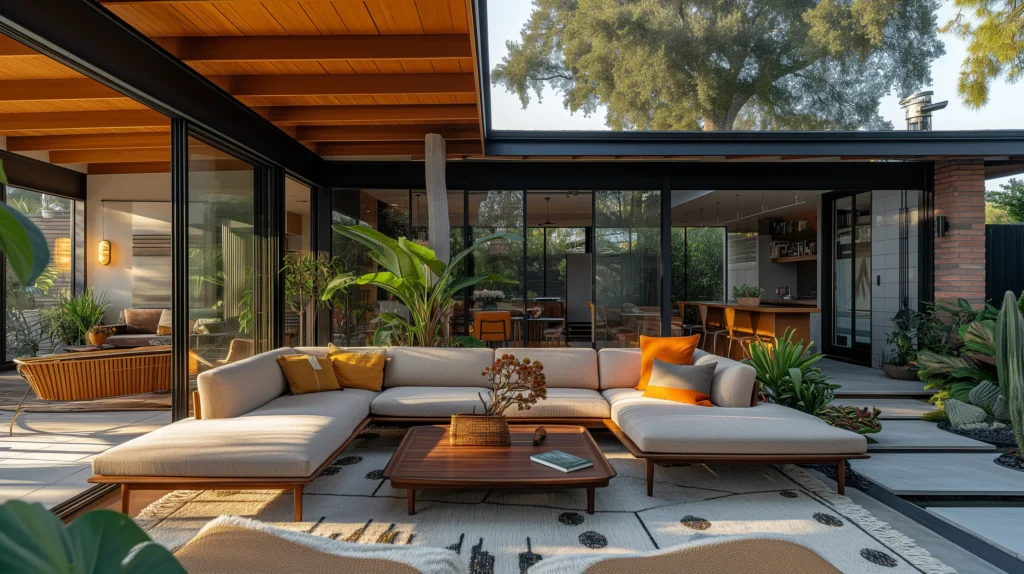
Midcentury Modern interior design is characterized by several key elements that create its unique and timeless appeal. Here, we explore these elements through examples that showcase the style’s versatility and enduring popularity.
- Clean Lines and Organic Forms: Spaces designed in the Midcentury Modern style are marked by their uncluttered, sleek lines and shapes inspired by nature. The Eames lounge chair or the Saarinen tulip table are prime examples of furniture that embodies this principle, offering both aesthetic appeal and functional comfort.
- Use of Natural Materials: This design style frequently incorporates materials like wood, leather, and stone, emphasizing the connection between the indoors and nature. The use of teak, walnut, and rosewood in furniture pieces not only brings warmth and texture to interiors but also highlights the craftsmanship of the era.
- Functionality and Simplicity: Every piece of decor serves a purpose, avoiding unnecessary embellishment. The design of a midcentury modern living room, for instance, focuses on creating a usable and comfortable space that is also visually appealing, often featuring open floor plans that facilitate easy movement and social interaction.
- Bold Colors and Patterns: While the overall palette may lean towards neutrals, accents of vibrant colors and geometric or organic patterns in midcentury modern decor add depth and character to spaces. This can be seen in the strategic use of colorful artwork, patterned rugs, and accent cushions.
- Minimalistic Approach: The minimalist approach in Midcentury Modern design is not about the absence of items but the careful selection of pieces that offer maximum impact—less is indeed more. This is evident in settings where a single statement piece of furniture or art deco item can define the entire room’s aesthetic.
These examples illustrate how Midcentury Modern interior design achieves a balance between style and function, making it a popular choice for contemporary homes. The style’s ability to blend with other design aesthetics further enhances its appeal, offering endless possibilities for creative expression and personalization in modern living spaces.
Midcentury Modern Design Will Always Be In Style
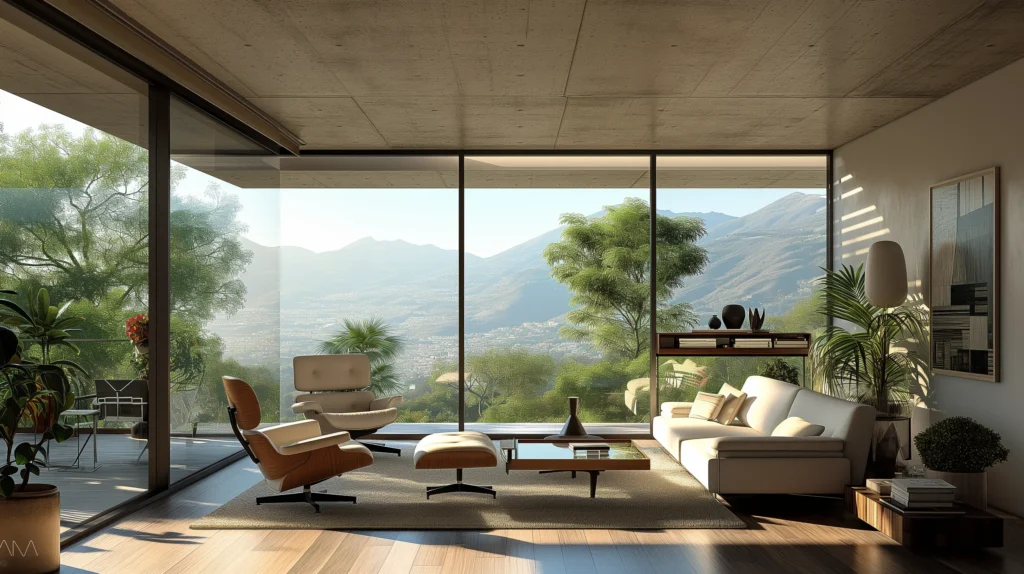
The timeless allure of Midcentury Modern design lies in its unique blend of simplicity, functionality, and aesthetic beauty. This style has continuously adapted to the evolving tastes of generations, proving its enduring relevance and appeal in the world of interior design.
- Enduring Appeal: Midcentury Modern’s clean lines, organic shapes, and integration of natural materials speak to a universal desire for spaces that are both beautiful and livable. Its emphasis on functionality without sacrificing style ensures that Midcentury Modern remains a go-to choice for designers and homeowners alike.
- Versatility: One of the key strengths of Midcentury Modern design is its versatility. It pairs well with a variety of other styles, from bohemian to contemporary, making it easy to incorporate into diverse home settings. This adaptability allows for a modern twist on classic designs, ensuring that Midcentury Modern elements can seamlessly blend into today’s interiors.
- Influence on Modern Design: The principles of Midcentury Modern design continue to influence contemporary design choices. The preference for open floor plans, natural light, and indoor-outdoor living reflects the Midcentury Modern ethos, demonstrating its impact on modern architectural and interior design trends.
- Sustainability and Quality: The focus on quality craftsmanship and durable materials resonates with today’s environmentally conscious consumers. Furniture pieces and decor from the Midcentury era were made to last, aligning with current trends towards sustainability and against the throwaway culture.
Midcentury Modern design transcends mere nostalgia, offering solutions that address the practical and aesthetic needs of the modern homeowner. Its ability to evolve while retaining its core characteristics of simplicity, functionality, and beauty ensures that Midcentury Modern design will always be in style. Whether through the incorporation of iconic furniture pieces into contemporary homes or the adaptation of its design principles to modern lifestyles, Midcentury Modern continues to be a source of inspiration and a benchmark for timeless design.
Characteristics of mid-century modern design
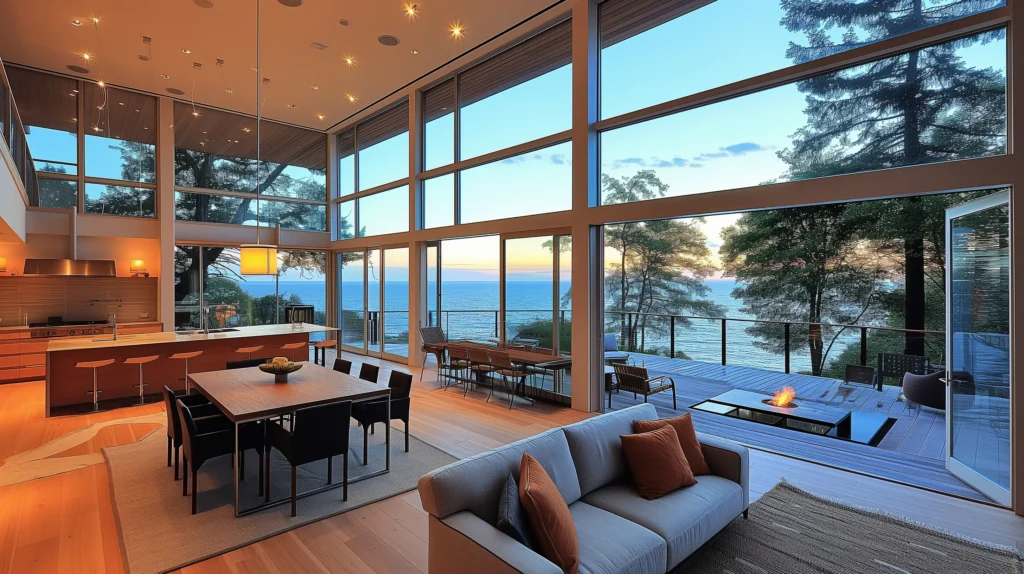
Midcentury design is celebrated for its distinctive characteristics that have cemented its place in the annals of design history. These features not only define the style but also contribute to its widespread appeal and enduring legacy.
Clean Lines and Organic Forms
The hallmark of Midcentury design is its emphasis on clean lines and organic forms. Furniture pieces and architectural elements eschew ornate details for simplicity and fluidity, mirroring the natural world. This design approach results in spaces that are both aesthetically pleasing and inherently calming, embodying a sense of effortless elegance.
Use of Natural Materials
Midcentury designers had a profound appreciation for the beauty and versatility of natural materials. Wood, leather, stone, and wool are commonly utilized, not only for their aesthetic appeal but also for their durability. The warm tones of teak, walnut, and rosewood furniture bring a touch of nature indoors, creating inviting and comfortable living environments.
Functionality and Simplicity
Functionality is paramount in Midcentury design, with every element serving a purpose. The simplicity of the design does not detract from its functionality but rather enhances it, promoting a clutter-free and harmonious space. This principle is evident in the thoughtful integration of storage solutions and multipurpose furniture, maximizing both space and utility.
Bold Colors and Patterns
While the overarching theme in Midcentury design leans towards neutrality, strategic use of bold colors and patterns injects vibrancy and depth into spaces. Accent pieces like cushions, rugs, and wall art feature geometric or abstract patterns, offering a contrast that highlights the overall design. This juxtaposition of bold and muted tones creates dynamic and visually interesting interiors.
Minimalistic Approach
Midcentury design embodies a minimalist ethos, focusing on the idea that less is more. Spaces are designed with a keen eye for proportion and scale, ensuring that each piece of furniture and decor not only serves a functional purpose but also contributes to the aesthetic unity of the room. This minimalistic approach fosters a sense of tranquility and openness, making Midcentury interiors timeless and appealing.
Influential Mid Century Modern Designers
The Midcentury Modern movement was propelled by visionary designers whose innovative ideas and distinctive styles left an indelible mark on the world of design. Here are some of the luminaries who played pivotal roles in shaping this iconic style.
Charles and Ray Eames
Charles and Ray Eames were a dynamic duo whose work epitomized the Midcentury Modern ethos. Best known for their revolutionary furniture designs, such as the Eames Lounge Chair and the Eames Molded Plastic Chair, they blended beauty, comfort, and functionality with groundbreaking manufacturing techniques. Their work extended beyond furniture to architecture and film, showcasing their versatile talent and creative vision.
“The details are not the details. They make the design.” – Charles Eames
Eero Saarinen
Eero Saarinen was renowned for his futuristic architecture and furniture designs that pushed the boundaries of form and function. His iconic Tulip Table and Womb Chair have become symbols of Midcentury Modern design, celebrated for their sculptural shapes and innovative use of materials. Saarinen’s architectural works, including the TWA Flight Center and the Gateway Arch, reflect his ability to integrate organic forms into the built environment.
The purpose of architecture is to shelter and enhance man’s life on earth and to fulfill his belief in the nobility of his existence.” – Eero Saarinen
Arne Jacobsen
Arne Jacobsen, a Danish architect and designer, made significant contributions to Midcentury Modern design with his minimalist and functional approach. His Egg Chair and Swan Chair, designed for the SAS Royal Hotel in Copenhagen, are celebrated for their elegance and comfort. Jacobsen’s work in both furniture design and architecture exemplifies the seamless integration of form and function that is characteristic of midcentury style.
“Architecture tends to consume everything else, it has become one’s entire life.” – Arne Jacobsen
Florence Knoll
Florence Knoll was instrumental in shaping the American interior design landscape through her work as a furniture designer and architect. She introduced the concept of the “total design” approach in corporate spaces, emphasizing functionality and coherence. Her furniture designs, characterized by clean lines and modernist principles, continue to be staples in offices and homes worldwide.
“Good design is good business.” – Florence Knoll
George Nelson
George Nelson was a versatile designer known for his innovative concepts and wide-ranging contributions to furniture, lighting, and interior design. As the design director of Herman Miller, he played a crucial role in popularizing Midcentury Modern design, introducing iconic pieces like the Coconut Chair and the Marshmallow Sofa. Nelson’s forward-thinking approach extended to his creation of practical, yet stylish, home accessories.
“Design is a response to social change.” – George Nelson
These designers not only defined the aesthetic of Midcentury Modern design but also revolutionized how we think about spaces and the objects within them. Their legacy lives on in the timeless pieces they created, continuing to inspire and influence contemporary design.
Mid Century Modern Furniture and Decor
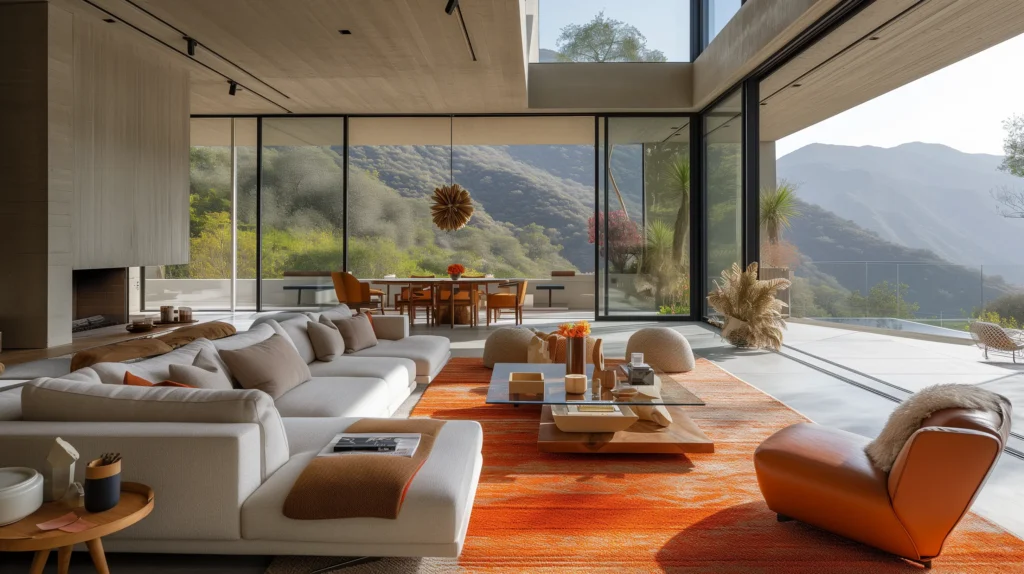
Mid Century Modern furniture and decor are distinguished by their distinctive designs, which combine functionality with aesthetic appeal. Here’s a closer look at the elements that make this style stand out.
A. Iconic Furniture Pieces
The furniture of the Mid Century Modern era is characterized by its innovative use of materials, streamlined shapes, and a focus on functionality. Iconic pieces include the Eames Lounge Chair, the Saarinen Tulip Table, and the Noguchi Coffee Table. These pieces exemplify the era’s design ethos, combining comfort with a sleek, modernist aesthetic that remains highly sought after today.
B. Use of Woods Such as Teak, Rosewood, and Walnut
Natural materials play a central role in Mid Century Modern design, with a particular emphasis on wood. Teak, rosewood, and walnut are commonly used for their durable qualities and rich, warm tones. The natural grain of these woods adds texture and depth to furniture, from expansive dining tables to slender-legged chairs, contributing to the organic feel that is synonymous with this style.
C. Incorporation of Geometric Shapes
Geometric shapes are a hallmark of Mid Century Modern decor, evident in everything from wall art to rug designs. These shapes, whether in the form of hexagons, circles, or abstract patterns, add a dynamic and visually engaging element to interiors. Furniture often features geometric influences as well, with triangular table bases or circular mirrors, creating a cohesive design theme that is both playful and sophisticated.
D. Examples of Mid Century Modern Decor
Beyond furniture, Mid Century Modern decor includes a range of accessories that complement the minimalist aesthetic of the era. Sunburst clocks, starburst mirrors, and sculptural vases are popular choices for adding a touch of Mid Century flair to any space. Textiles featuring bold patterns or muted, earthy tones can be used to soften the clean lines of Mid Century furniture, while vintage posters or abstract art pieces provide a colorful focal point in a room.
How to Incorporate Mid-Century Modern Design in Modern Homes
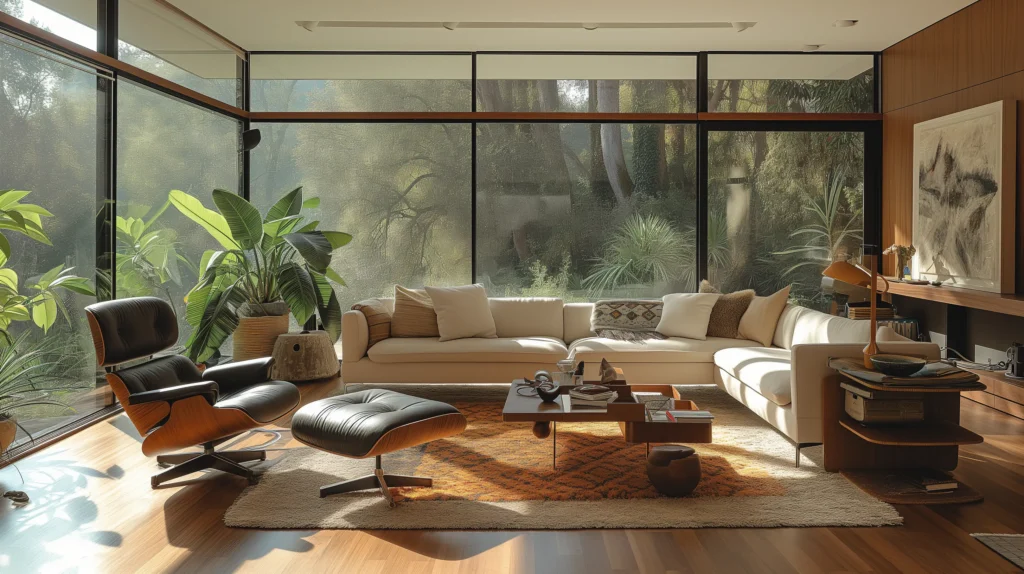
Incorporating Mid-Century Modern design into modern homes offers a timeless yet fresh aesthetic, blending the best of past and present. Here’s how to seamlessly integrate this style into contemporary living spaces.
Tips for Integrating Mid Century Modern into Different Rooms
- Start with Statement Pieces: Begin by selecting one or two iconic Mid-Century Modern furniture pieces for each room. An Eames lounge chair in the living room or a Saarinen table in the dining area can serve as focal points around which to build the rest of your decor.
- Emphasize Open Spaces: Mid-Century Modern design values open, uncluttered spaces. Arrange furniture to encourage flow and interaction, utilizing the open floor plans common in modern homes.
- Play with Color and Texture: Use Mid-Century’s characteristic bold colors and patterns in moderation—think accent walls or throw pillows—to complement the neutral tones of contemporary interiors. Natural materials like wood and leather add warmth and texture.
Mixing Mid Century Modern Pieces with Other Design Styles
- Balance with Contemporary Elements: Combine Mid-Century furniture with modern pieces for a balanced look. A contemporary sofa can look great with a Mid-Century coffee table, creating a space that feels both timeless and modern.
- Contrast Styles: Don’t be afraid to mix styles. The clean lines of Mid-Century furniture can beautifully contrast with the ornate details of traditional decor or the casual feel of bohemian interiors, offering a unique and personalized aesthetic.
- Harmonize Through Color: Use color to unify different styles within a space. A consistent color palette can tie together Mid-Century pieces and contemporary elements, creating a cohesive look.
Shopping for Mid Century Modern Furniture and Decor
- Seek Out Authentic Pieces: For those passionate about authenticity, vintage shops, estate sales, and specialized dealers offer original Mid-Century pieces. These items not only serve as functional decor but also as investments in design history.
- Explore Contemporary Reproductions: Many modern furniture brands produce high-quality reproductions of classic Mid-Century designs. These pieces provide the look and feel of Mid-Century style with the benefits of new materials and construction techniques.
- Don’t Overlook Accent Pieces: Mid-Century decor isn’t just about furniture. Look for period-appropriate lamps, wall art, and textiles to complete the look. These smaller items can make a significant impact without overwhelming your space.
Incorporating Mid-Century Modern design into modern homes is about finding a balance between old and new. By blending iconic pieces with contemporary aesthetics and embracing the principles of simplicity, functionality, and natural harmony, you can create a living space that is both stylish and timeless.
Midcentury Modern Style Plays Nicely With Other Design Styles
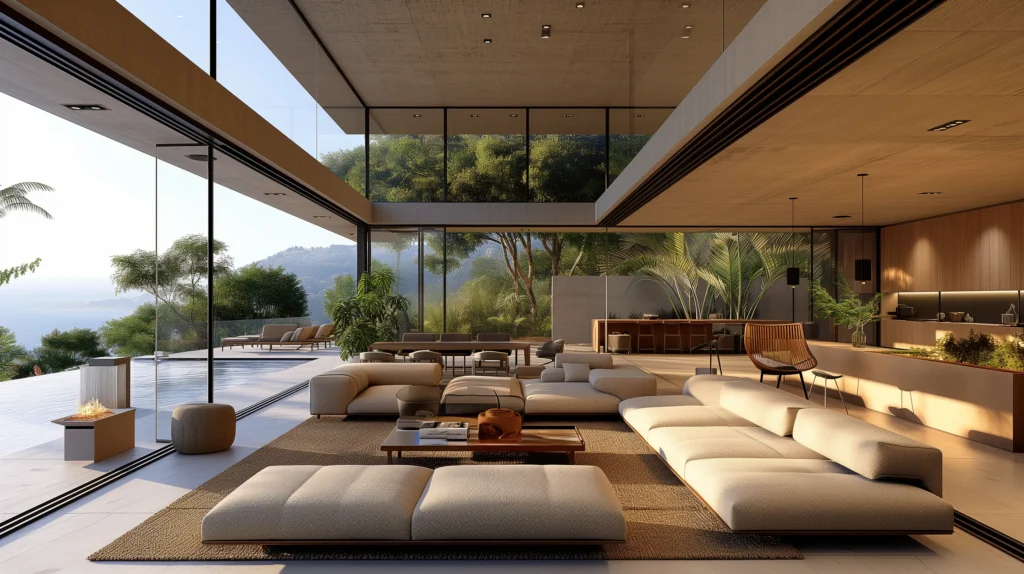
The adaptable and timeless nature of Midcentury Modern style allows it to blend harmoniously with a variety of other design styles. This versatility is one of its most appealing aspects, enabling homeowners to create spaces that are both unique and personal. Here’s how Midcentury Modern complements other styles:
- With Contemporary Design: The clean lines and functional simplicity of Midcentury Modern pieces pair perfectly with the sleek, minimalist aesthetic of contemporary design. Together, they create a space that is both stylish and practical, characterized by open spaces and a light, airy feel.
- Bohemian (Boho) Chic: The organic materials and earthy colors of Midcentury Modern furniture provide a solid foundation for the eclectic, vibrant elements of bohemian style. Combining these styles can result in a warm, inviting space that feels curated and personal, with each piece telling its own story.
- Industrial: The juxtaposition of the warm wood tones and smooth curves of Midcentury furniture against the raw, edgy elements of industrial design creates a dynamic and visually interesting space. This combination works well in loft apartments and open-concept homes, where the contrast between the two styles can be fully appreciated.
- Scandinavian: Both Midcentury Modern and Scandinavian designs share an appreciation for simplicity, functionality, and the use of natural materials, making them natural allies. The light, muted color palette of Scandinavian interiors complements the bold accents and rich wood tones of Midcentury pieces, creating a serene and cohesive look.
- Traditional: Integrating Midcentury Modern pieces into a traditionally styled home can add a touch of modernity and freshness. A classic Midcentury chair or a sleek credenza can serve as a focal point in a room, offering a surprising twist that enhances the overall aesthetic.
- Eclectic: Midcentury Modern’s versatility shines in eclectic interiors, where its pieces can stand alongside items from different eras and styles. Its clean lines and timeless design provide a grounding effect, ensuring the space feels cohesive despite its varied elements.
The ability of Midcentury Modern style to complement and enhance other design styles is a testament to its enduring appeal and flexibility. By mixing and matching different styles, you can create a space that reflects your personal taste and lifestyle, all while maintaining a sense of balance and harmony. Whether you’re drawn to the minimalist appeal of Scandinavian design or the vibrant, collected feel of boho chic, Midcentury Modern pieces can help bridge the gap, bringing together the best of both worlds.
What colors work well with midcentury furniture?
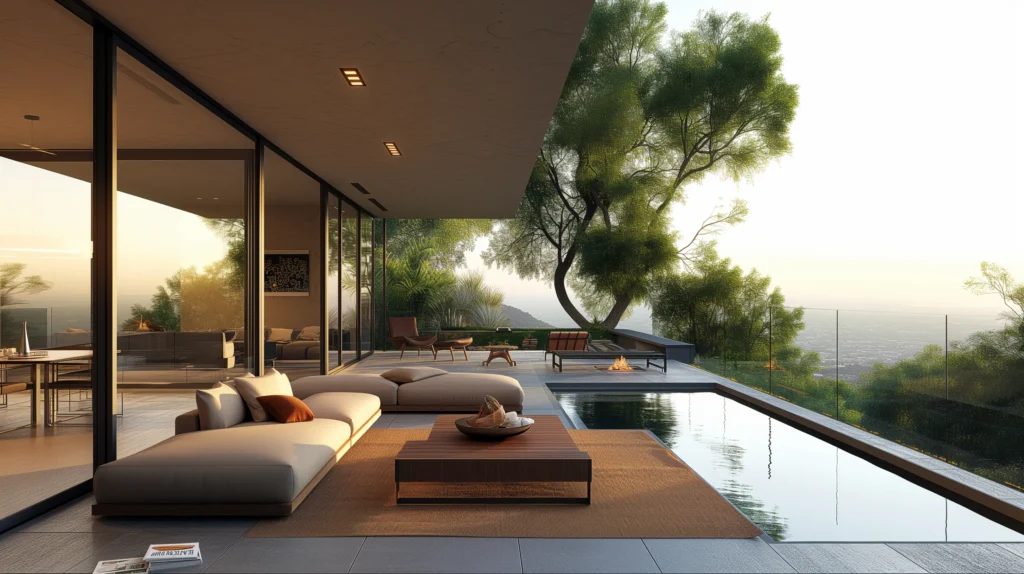
Choosing the right colors to complement Midcentury Modern furniture is key to achieving a cohesive and appealing interior design. The Midcentury palette ranges from muted to bold, offering a variety of options to suit different tastes and styles. Here’s a guide to colors that harmonize beautifully with Midcentury furniture:
- Neutrals: Start with a neutral base to highlight the beauty of Midcentury design. Shades of white, beige, and gray provide a clean backdrop that allows the furniture to stand out. These colors also reflect light, contributing to the airy, open feel characteristic of Midcentury interiors.
- Warm Woods: The rich tones of teak, walnut, and rosewood are quintessential to Midcentury furniture. Complement these warm woods with earthy hues like olive green, burnt orange, and mustard yellow. These colors echo the natural elements of the era and add depth to your space.
- Bold Accents: Don’t shy away from bold colors. Midcentury Modern design often features pops of bright colors like turquoise, red, and cobalt blue. Use these vibrant hues in moderation through accent pieces, such as throw pillows, rugs, or a statement wall, to inject energy and personality into the room.
- Pastels: For a softer approach, consider pastel tones like pale pink, baby blue, and mint green. These colors can add a subtle touch of color that is both soothing and stylish, complementing the wood tones of Midcentury furniture without overwhelming the space.
- Black and White: A black and white color scheme can offer a striking contrast to the natural wood of Midcentury pieces. This timeless combination creates a sophisticated and modern look that emphasizes the clean lines and simple forms of the furniture.
- Metallics: Accents in gold, silver, and brass can add a touch of glamour to Midcentury Modern decor. Use metallic finishes in lighting fixtures, hardware, and decorative objects to complement the furniture and add a luxurious feel to the space.
When selecting colors to pair with Midcentury furniture, consider the overall mood you want to create and the natural light in your space. Experiment with different combinations to find the perfect balance that reflects your personal style and enhances the beauty of your Midcentury pieces.
Mid-century modern in Popular Culture
The Mid-Century Modern design movement has left an indelible mark on popular culture, influencing everything from television and film to fashion and art. Its timeless appeal and aesthetic versatility have made it a favorite among designers and artists alike.
Influence of Mid Century Modern in Television and Film
Mid-Century Modern design is a staple in many television shows and films, often used to evoke a sense of nostalgia or to symbolize sophistication and style. Iconic shows like “Mad Men” meticulously incorporate Mid-Century Modern furniture and decor, capturing the essence of the 1960s with authentic pieces that define the period’s aesthetic. Similarly, films set in the mid-20th century frequently feature Mid-Century Modern interiors, using the design style to enhance authenticity and visual appeal. This prominent display in media not only celebrates the design’s historical significance but also introduces it to new generations, keeping the style relevant and admired.
Use of Mid Century Modern Design in Current Fashion and Art
Mid-Century Modern’s influence extends beyond interior design into the realms of fashion and art. Fashion designers draw inspiration from the era’s clean lines and bold patterns, incorporating these elements into contemporary clothing and accessories. The design’s characteristic geometric shapes and vibrant colors are echoed in modern graphic design, illustration, and sculpture, showcasing its versatility and enduring influence on creative expression. This crossover highlights the design’s ability to transcend mediums, reinforcing its status as a timeless and versatile aesthetic.
Preservation of Mid Century Modern Architecture
The architectural legacy of Mid-Century Modern design is preserved through the efforts of conservationists and enthusiasts who recognize the style’s historical and cultural value. Iconic buildings and homes, designed by luminaries such as Richard Neutra and Frank Lloyd Wright, are meticulously maintained and, in some cases, have been designated as historic landmarks. Organizations and communities around the world advocate for the preservation of Mid-Century Modern architecture, ensuring that these structures continue to inspire and influence for years to come. The growing interest in architectural tours and events focused on Mid-Century Modern design further underscores the public’s fascination and appreciation for this architectural style.
Mid-Century Modern’s presence in popular culture underscores its significance and versatility as a design movement. Whether through the meticulous set designs of television and film, its influence on contemporary fashion and art, or the preservation of its architectural icons, Mid-Century Modern continues to captivate and inspire. Its ability to adapt and resonate with each new generation ensures that Mid-Century Modern design remains not just a relic of the past but a vibrant and living part of our cultural fabric.
Conclusion
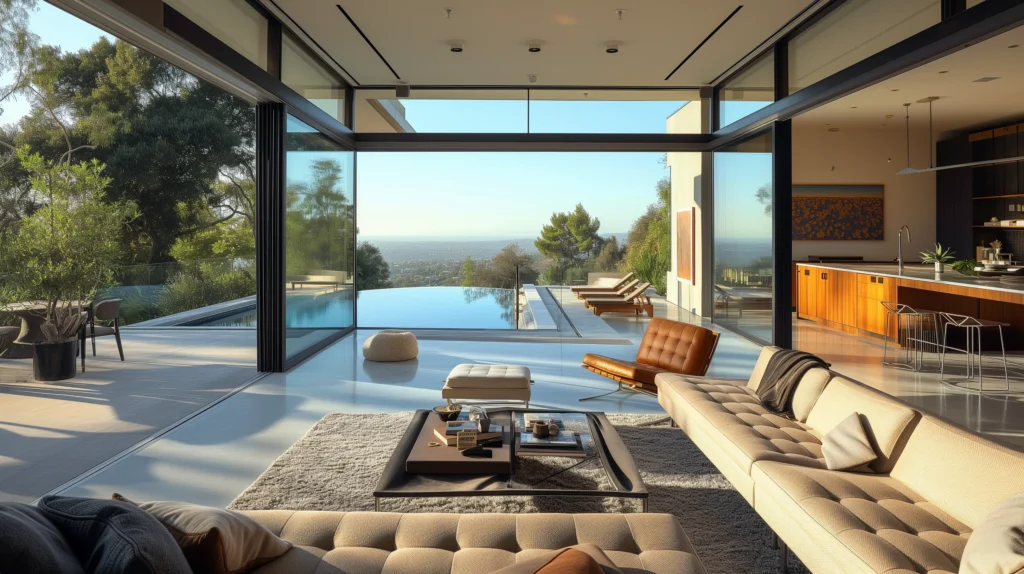
The exploration of Mid-Century Modern design reveals a movement that is as impactful today as it was in the mid-20th century. Its elements and history paint a picture of innovation, functionality, and timeless appeal, underscoring why this style continues to resonate with so many.
Recap of Mid Century Modern Design Elements and History
Mid-Century Modern design, with its clean lines, organic forms, and emphasis on functionality, emerged in the post-war era as a symbol of modernity and simplicity. Celebrated designers like Charles and Ray Eames, Eero Saarinen, and George Nelson introduced iconic furniture pieces that defined the style’s aesthetic, marrying form with function in ways that were revolutionary for their time. The use of new materials and techniques allowed for designs that were both beautiful and accessible, marking a significant period in design history that extended beyond furniture to architecture and interior decor.
Continuing Influence and Relevance of Mid Century Modern
The influence of Mid-Century Modern design extends into contemporary life, evident in the ongoing popularity of its furniture and architectural principles. Its versatility allows it to blend seamlessly with other design styles, from bohemian to contemporary, making it a perennial favorite among designers and homeowners alike. The style’s principles of simplicity and functionality align with current trends toward minimalism and sustainable living, proving its enduring relevance in a rapidly changing world.
Final Thoughts on the Enduring Appeal of Mid Century Modern Style
The enduring appeal of Mid-Century Modern style lies in its ability to evoke a sense of nostalgia while remaining forward-looking. Its celebration of simplicity, natural materials, and the blurring of indoor and outdoor spaces speaks to a universal desire for harmony and balance in our environments. As we continue to navigate the challenges of the modern world, the principles of Mid-Century Modern design offer a blueprint for creating spaces that are both beautiful and livable, reminding us of the power of design to enhance our daily lives.
The legacy of Mid-Century Modern design is a testament to the vision of its pioneers and the enduring desire for style that marries beauty with functionality. As we look to the future, the principles of Mid-Century Modern design remain a guiding light, illustrating that true design excellence is timeless.

